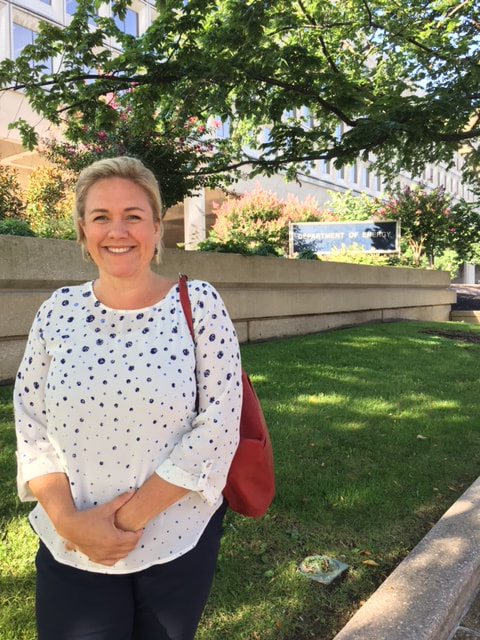|
This morning I, along with four other Einstein Fellows, attended The Learning Policy Institute event on “Teacher Turnover: Why It Matters and What We Can Do About It.” The Institute recently published a report of the same title that offers a state-by-state analysis of the factors affecting teacher recruitment, retention and attrition. Who is leaving teaching? Why are they leaving teaching? And, what policies can be implemented to reduce the impact of teacher attrition? Highlights from the Learning Policy Institute research findings were shared followed by two panel discussions, one on the impact of teacher turnover and the other on policies that can be used to address teacher turnover.
The Learning Policy Institute has an informative interactive tool for understanding the teacher shortage. Obviously, I was immediately drawn to the data for Washington State. I was not surprised that Washington has an overall Teaching Attractiveness Rating of 3.5 (out of 5). As with every state, Washington has strengths and weakness in terms of different indicators of teaching attractiveness. For example, Washington has very high teacher qualification ratings (5 out of 5) but very low ranking for pupil-teacher ratio (1 out of 5). Play around with the tool below:
Like the Defense Against the Dark Arts class at Hogwarts, for the majority of students in the majority of schools, the teachers are always in transition, always in flux. Some facts and tidbits from the research report and presentation today that were especially interesting to me are:
The Learning Policy Institute as a powerful, interactive tool for those interested in estimating the financial cost of teacher turnover at a local level:
After a presentation of the research findings, the impact of teacher turnover was discussed by members of the first panel. Of course, the students are the most important stakeholder in the education arena, so it was wonderful that the panel included a Californian high school senior who could provide a first hand account of her experience with teacher attrition. A school board member from Maryland described how many districts focus on recruitment without thought to the other end of the spectrum… retention. The money saved by school districts by reducing teacher attrition could be used for increasing teacher salary, reducing the facilities maintenance backlog and/or reducing class size.
A second panel discussed policies to address teacher turnover, focusing on the need to take a comprehensive, local approach. My home state of Washington was featured as one of the panelist was a Representative Santos, who serves a legislative district in and near Seattle. There has been a 35% drop in the number of people going into teacher education programs, and in Washington nearly ⅓ of teachers are nearing retirement age. That is a recipe for a teacher shortage. Representative Santos and the Virginia Superintendent of Education outlined strategies to address the teacher shortage such as “grow your own” programs, teacher residency programs, and mentoring/induction programs. The education division program director for the National Governors Association mentioned the electoral opportunity, as there will be 41 governor elections in 2018. In the last 25 years, the percent of teachers leaving the profession each year has risen (from 5% annual attrition in 1992 to 8% attrition in 2017). Correlated with the increase in teacher attrition are decreases in salaries, decreases in working conditions, increase in class size and an increase in “teacher bashing”. An overarching theme from both panels was the need to shift the narrative and perception of teachers, raising the respect of the teaching profession. In the words of Representative Santos, “we need to stop sucking the joy out of this profession!” My curiosity is on the role of the classroom teacher. Policy approaches seem to be happening TO teachers. I want to know what can be done BY teachers to change the dialogue about and perception of teachers. Teaching is an incredibly rewarding profession and we, as classroom teachers working "in the trenches" need to work to #keepourteachers |
Archives
July 2018
|
I give many of my IB Biology resources away, for the benefit of students and teachers around the world.
If you've found the materials helpful, please consider making a contribution of any amount
to this Earthwatch Expedition Fund.
Did I forget something? Know of a mistake? Have a suggestion? Let me know by emailing me here.
Before using any of the files available on this site,
please familiarize yourself with the Creative Commons Attribution License.
It prohibits the use of any material on this site for commercial purposes of any kind.
If you've found the materials helpful, please consider making a contribution of any amount
to this Earthwatch Expedition Fund.
Did I forget something? Know of a mistake? Have a suggestion? Let me know by emailing me here.
Before using any of the files available on this site,
please familiarize yourself with the Creative Commons Attribution License.
It prohibits the use of any material on this site for commercial purposes of any kind.
